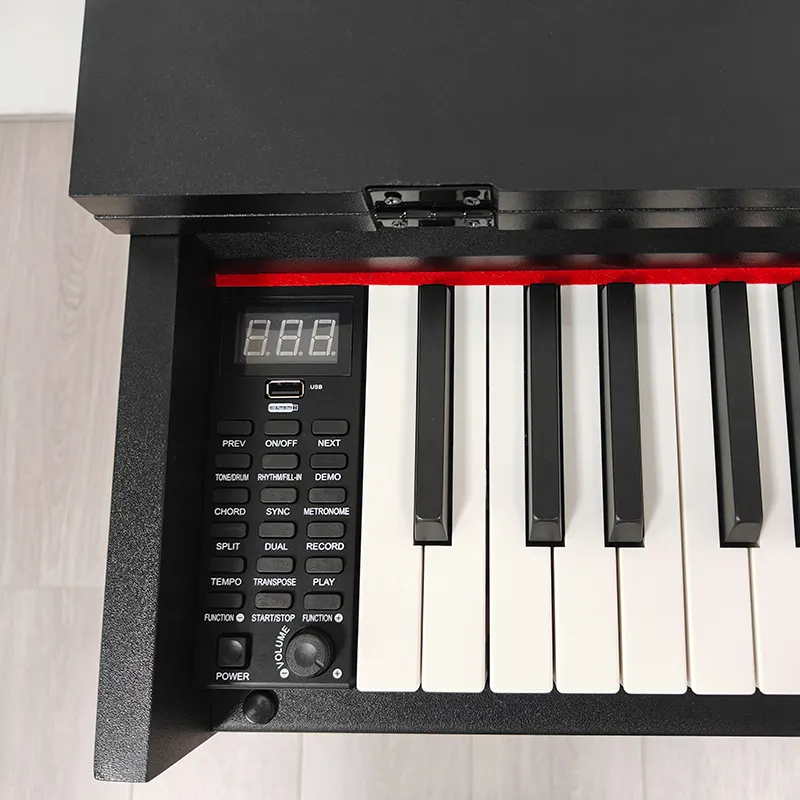In today's evolving musical landscape, the demand for versatile, compact, and user-friendly instruments continues to grow. Among the many options available, the digital piano has become a standout choice for both beginners and professional musicians. One of the most practical and popular forms of this instrument is the upright digital piano. Combining the aesthetic appeal of an acoustic upright piano with the advanced features of digital technology, upright digital pianos offer a unique blend of tradition and innovation that appeals to a broad range of users. Whether used for home practice, teaching, or performance, these instruments are increasingly seen as a smart investment.
An upright digital piano is often designed to resemble a classic acoustic upright piano, making it a seamless addition to home décor. Unlike bulky grand pianos or minimalist portable keyboards, these instruments provide a substantial visual presence without overwhelming the room. Available in various finishes and styles, upright digital pianos add a touch of elegance to any space.
Despite their full-sized keyboards and powerful sound systems, upright digital pianos are space-efficient. They require less floor area than traditional upright pianos while still offering similar visual impact and musical functionality. This makes them ideal for apartments, small studios, or multi-purpose rooms where space optimization is crucial.
Digital piano manufacturers focus heavily on replicating the feel of an acoustic piano. Upright digital pianos often come equipped with graded hammer action keys that mimic the resistance of traditional keys. This key action supports the development of finger strength and technique, crucial for students and valuable for experienced players.
Modern upright digital pianos utilize high-resolution sampling and multi-layered sound engines to create rich, dynamic tones. With built-in speakers that deliver clarity and depth, these instruments can emulate the nuance of a grand piano. Some models even offer surround sound or speaker placement that mimics the projection of an acoustic instrument.
Upright digital pianos often include USB, MIDI, and Bluetooth connections, enabling integration with music production software, learning apps, and external sound systems. These features are useful for recording, virtual lessons, or live performances. Wireless connectivity allows for easy interaction with devices such as tablets and smartphones.
Most upright digital pianos are equipped with educational functions such as metronomes, lesson modes, and demo songs. These tools are particularly useful for beginners, offering structured learning experiences without needing additional equipment. For advanced users, recording and playback functions help refine technique and interpretation.

For new pianists, an upright digital piano provides an authentic playing experience without the need for frequent tuning or high maintenance. The intuitive controls and built-in practice aids help learners stay motivated. Many models include features like volume control and headphone outputs, making home practice more flexible and family-friendly.
Professional musicians benefit from the reliability and consistency of digital pianos. Upright digital models with weighted keys and high-quality sound engines can support performance, composition, and rehearsal. Their ability to integrate with DAWs and other production tools makes them versatile for studio work as well.
One of the most appreciated features of an upright digital piano is the ability to practice silently using headphones. This makes it easier for users to play at any hour without disturbing others, a significant advantage in shared or quiet living environments.
Unlike acoustic pianos that require regular tuning and climate control, digital pianos need very little upkeep. Upright digital pianos are designed for longevity, with robust construction and stable performance regardless of temperature or humidity. This reliability is a major plus for both casual and professional users.
While some high-end models can be expensive, upright digital pianos are generally more affordable than acoustic pianos with similar features. They also eliminate the need for periodic tuning, reducing long-term maintenance costs. Entry-level models offer a strong feature set at a budget-friendly price, making them accessible to students and hobbyists.
Quality upright digital pianos are built to last. Their solid construction and updatable software ensure that they remain relevant and functional for years. For families with multiple learners or households that frequently use the instrument, the durability adds to the overall value.
Many upright digital pianos allow users to adjust the touch sensitivity, tuning, reverb, and other parameters to suit their preferences. This level of customization supports a more personal and expressive playing experience, appealing to musicians of all skill levels.
Modern digital pianos often feature LCD or touchscreen displays that simplify navigation through sounds, settings, and practice tools. These interfaces make it easier to explore the instrument’s full capabilities and adapt it to various musical needs.
Music teachers appreciate the practical features of upright digital pianos, such as dual headphone outputs and split keyboard modes, which are ideal for lessons. These instruments also support app integration and USB recording, allowing for more dynamic and interactive teaching methods.
Digital pianos keep students engaged with built-in games, progress trackers, and compatibility with online learning platforms. These features enhance motivation and provide immediate feedback, helping learners improve more quickly and enjoyably.
Compared to traditional pianos, digital models consume less energy and often incorporate sustainable materials in their construction. Manufacturers are increasingly focused on reducing their carbon footprint while maintaining high-quality craftsmanship.
With regular firmware updates and downloadable content, upright digital pianos can evolve over time. This adaptability extends the instrument’s usefulness and ensures it stays current with musical trends and technological advancements.
Digital pianos offer volume control, headphone use, portability, and minimal maintenance, making them more suitable for modern lifestyles.
Many digital pianos, especially upright models, use graded hammer action and high-quality sound sampling to closely mimic the feel and response of an acoustic instrument.
Yes, upright digital pianos are designed to fit comfortably in compact areas while offering the functionality of a full-sized keyboard.
No, digital pianos remain in tune permanently and do not require the regular maintenance that acoustic pianos need.